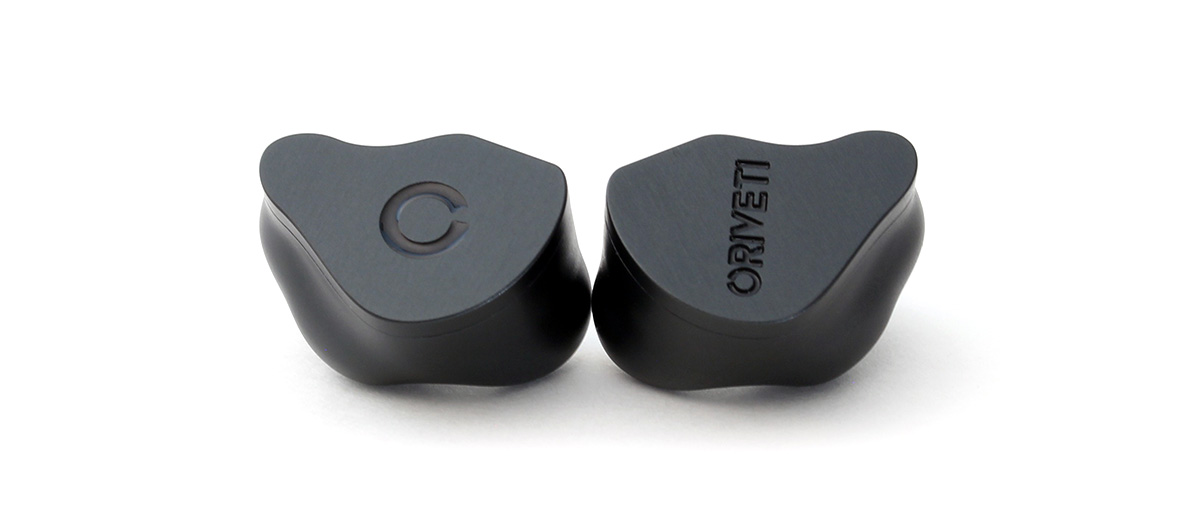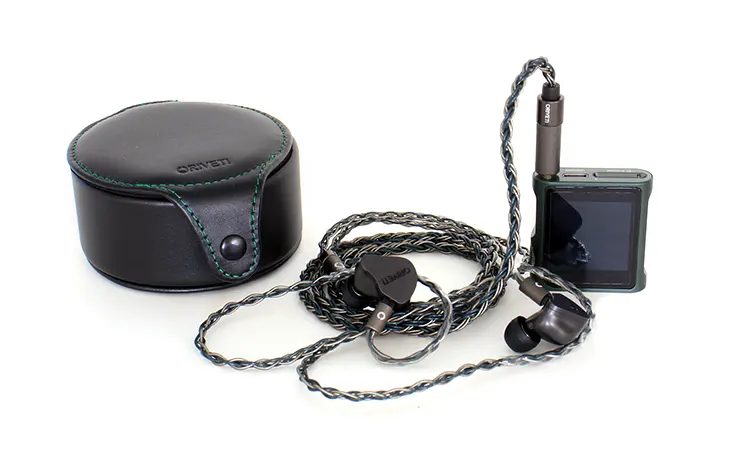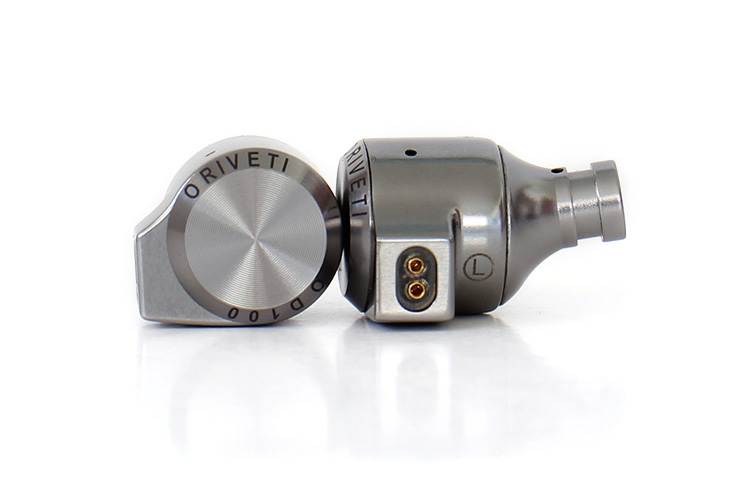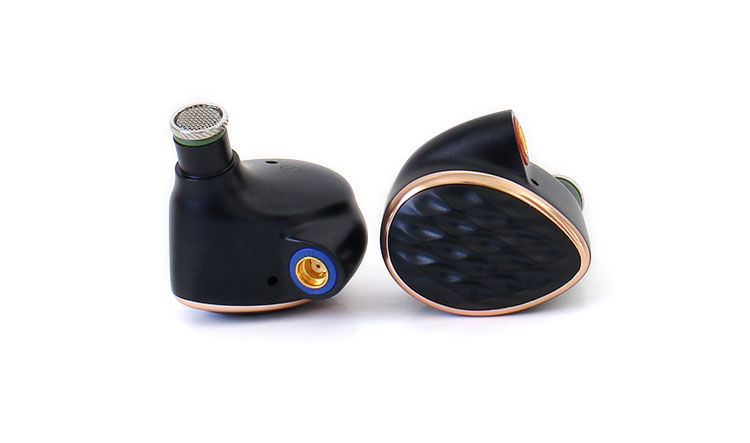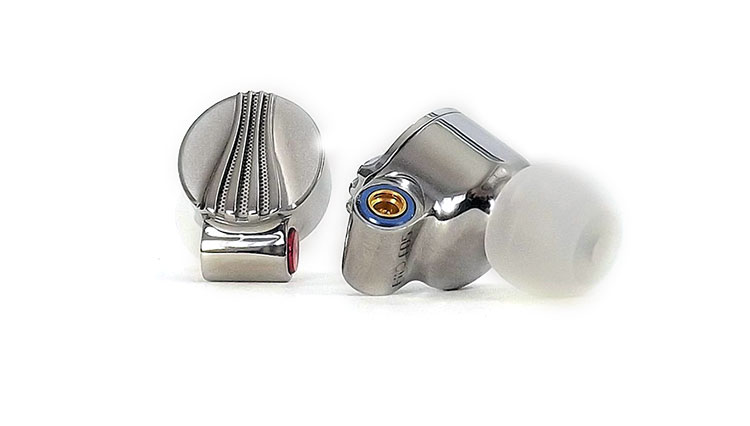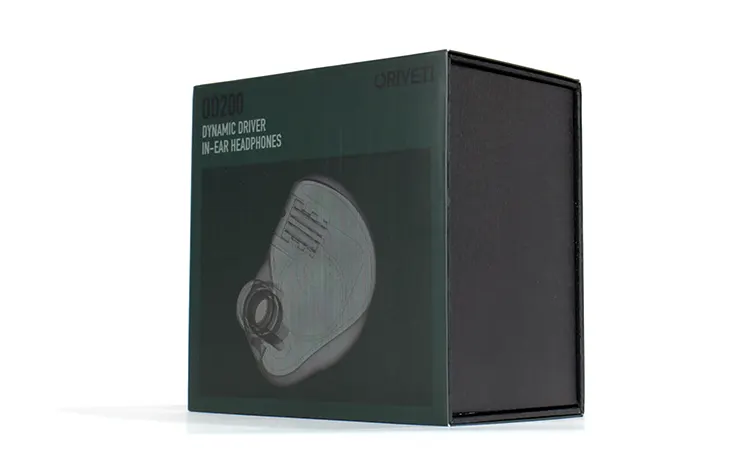Synergy
Efficiency
The ORIVETI OD200 is very sensitive but not hissy-sensitive. So it can be used with powerful amplifiers such as the iFi Audio iDSD Diablo with no perceived overdrive or negative consequences at the same time as more agile dongles and DAPs such as the Shanling M0 Pro.
Matter of fact, comparatively their efficiency level is not as high as some of the other single dynamic driver IEMs within my collection. But they seem to get along with low-power input sources.
Pairings
The OD200 is a very versatile set. You can use them with bright or warm amplification since you can subtly tune their overall sonic signature by combining one of the nozzle sizes with one of the three tip selections.
If you want a bright presentation, use the silver-colored nozzles but all you have to do to warm things up is change over to the black-colored nozzle set.
The OD200 is versatile in that sense and it also comes with 3 different types of connectivity so most likely your present gear will pair just fine and you’re good to go right out of the box.
Select Comparisons
ORIVETI OD100
Technical
The OD100 is the little brother to the OD200 in the new ORIVETI lineup but they seem to have different genetics. Yes, both models use a single dynamic driver but that’s about their only similarity.
The OD100 uses a 9.2mm diamond-like carbon diaphragm dynamic driver that has identical specifications to the OD200 driver albeit the sensitivity which is 3 decibels higher on the OD200 and was listed as 108db ±3 decibels versus 105.
The overall OD100 design is simple and ORIVETI focused most of its attention on the shell size and aimed to come up with a small form factor IEM. So interchangeable nozzles were not incorporated in this set. They do come with the same amount of tips which is a total of nine sets.
Design
The OD100 sports an industrial-oriented design by using raw metal throughout. The shell has 3 major components, the centerpiece which is just a cylinder shape, an angled nozzle, and a backplate.
The shell seems to be vented and there are a couple of holes visible on the shell, plus there’s some etching on the backplate that consists of the ORIVETI name and the OD100 model number. It’s a basic and utilitarian design, but comfortable to wear nonetheless.
Performance
The first noticeable characteristic is the added bilateral frequency extension you get off the OD200. It’s especially noticeable within the high frequencies but also in the lower frequencies.
Tonality seems to be similar and both these sets display a neutral overall sonic character but I’m almost inclined to say that the OD100 does layering within the staging area better.
What does the OD200 do better? It paints a better picture of the overall recording with better harmonics, a better representation of frequencies, more detail, and an enhanced natural timbre.
FiiO FH15
Technical
The FiiO FH15 is the antithesis in this comparison because it’s a three-plus-one-driver configured IEM. There are three Knowles BA drivers alongside a 10mm carbon-based diaphragm dynamic driver.
FiiO threw into the FH15 some of their patented design implementations including S Turbo and their notch filter but went further when it comes to tuning preferences by including three sets of output nozzles you can choose from.
One downside of the FH15 is that it comes with just two connectivity options versus the OD200’s three. FiiO omitted the 2.5mm connectivity and although it’s a harder-to-come-by connection, it would be nice to have one just in case. The cable itself is not too bad but I prefer the OD200 cable assembly here.
One aspect that the FH15 has going for it is that alongside the three output nozzles, tip selection is even more generous comparatively. I counted 15 sets. Plus FiiO makes their house brand tips now, the HS18 tips which are becoming one of my favorite tips due to their enhanced comfort level.
Design
Speaking of comfort, I could wear any of these IEMs for hours with no discomfort so that area you don’t have to worry much about.
What the FH15 shows in design is a more artistic side by implementing a scaled backplate, a copper ring centerpiece, and a black anodized metal shell. The copper ring adds bling. That sounds like a jingle, doesn’t it?
So, some prefer adornment over stealthiness, and if that’s the case, the FH15 is a good choice. But some might prefer stealthiness and the security of .78 connectivity since MMCX connectors can loosen up in time and even lose connectivity. Not that I’ve had any issues with FiiO MMCX connection implementations, never have.
Performance
Perhaps the FH15 will take the stage again, literally. The staging is done in a three-point space but the layering is better done on the FH15.
Where the OD200 shines is with its ability to sound natural and coherent. The FH15 could get hot at times especially if you push the volume hard on bright recordings.
The FH15 presents the listener with a brighter overall sonic performance and an obvious amount of high-frequency extension but the OD200 takes the cake when it comes to coherency.
FiiO FD5
Technical
Can the OD200 stand up to the upscale and popular FiiO FD5? They’re both single dynamic driver IEMs that employ many of their respective company’s patented designs, but FiiO seems to go further on the FD5.
FiiO threw in everything but the kitchen sink into this IEM and went further with tuning implementations. They threw in their Acoustic prism, the rear volcanic field system, a Daikoku copper-clad aluminum voice coil, a semi-open back design, and interchangeable nozzles. It’s a mouthful.
All that implementation was needed to control the 12mm Beryllium coated DLC diaphragm driver which is larger than average in size. Comparatively, the OD200’s driver is 9.8mm and is also Beryllium coated.
Design
The FD5 shell’s overall design is more like the OD100 but highly polished and with a decorative grille that is vented and forms part of the FD5 air control implementation besides looking pretty.
A funny aspect about the FD5 is that it comes with two output nozzles just like the OD200, but the FH15 which sits at a lower price tier, includes three. So the FH15 will be the best model for those who like to tweak.
The FD5 also comes with a modular cable and three types of connection options identical to the OD200.
The FiiO FD5 cable assembly is a silver coated 8 wire braided, metal hardware-equipped assembly that connects to the FD5 via MMCX connectors versus the OD200’s .78mm pin set.
Performance
There’s an obvious bass presence within the OD200 signature that’s not present in the FD5, not in volume, but in body. But the FD5 has a tighter bass response. You can obtain more bass from the OD200 with a boost over the FD5 which likes to be played at stock levels.
There seems to be more neutrality in the FD5 signature and more forwardness in the midrange area. The FD5 is also more efficient. Perhaps the 32Ω rating helps out since most amplifiers have a heftier output rating at 32Ω than at 16Ω.
Staging? Frontal depth seems equal between these two and so does the overall width, although the FD5 could be perceived as wider. It could dig deeper, as far as sounds being emitted below the vision line, but the OD200 can rear project.
Where the FD5 shines is in layering within the soundstage. The midrange is also pushed forward into the listener’s sitting position so it helps to bring forth detail.
But the FiiO FD5 has an almost vintage characteristic sonically that makes it sound more in line with a vintage speaker while the OD200 brings forth a fresh new tech speaker-like output.
Our Verdict
The ORIVETI OD200 is quite an attractive offering with its interchangeable output nozzles, ample tips, and a decent cable that offers great modular connectivity. It also comes with an unusually generous amount of included accessories.
ORIVETI has pulled one out of the hat with a well-balanced and overall good-sounding IEM that punches above its price tier.
ORIVETI OD200 Specifications
- Driver: Exclusive BE-coated 9.8mm dynamic driver
- Impedance: 16Ω
- Frequency response: 20 – 20,000Hz
- Sensitivity: 108db ±3db , 1000Hz
- Distortion: 0.08%
- Plug: Gold-plated 3.5mm / 2.5mm / 4.4mm balanced

